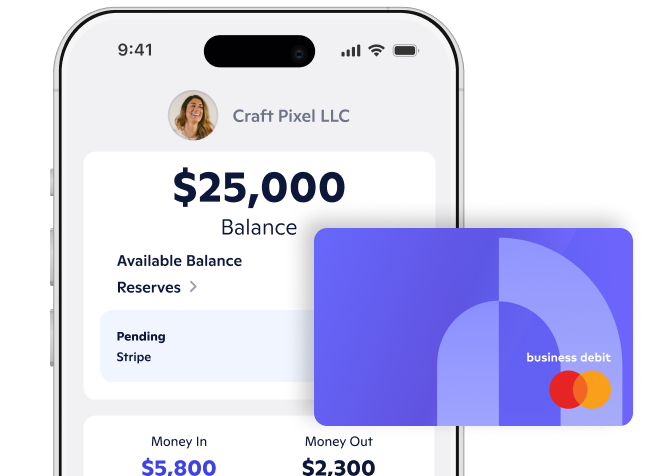
mall businesses rely on many tools and financial documents to track their health and growth. One of the most beneficial documents is the profit and loss statement, which highlights areas of strong performance and helps you plan for the future.
Here's what you need to know about making a profit and loss statement for your business and why you'll benefit from creating one.
What is a profit and loss statement?
A profit and loss (P&L) statement is a financial document that summarizes your business's revenue, costs, and gross and net income over time. Other terms for a P&L statement include:
- Income statement
- Earnings statement
- Revenue statement
- Operating statement/statement of operations
- Statement of financial performance
A P&L statement helps you track your business's financial health. By comparing statements from different periods, you can see changes in the company's performance over time.
Why profit and loss statements are important
Profit and loss statements are essential tools for small business owners and solopreneurs because:
- They're a health checkup for your business: They show you what you're doing right and what you might need to adjust.
- They make tax time easier: When you have updated P&L statements on file, you have information for your business taxes on hand.
- They help you make informed decisions: Your P&L data tells you whether your growth plans are working or if there’s room for adjustment.
Understanding the components of a profit and loss statement
P&L statements help you stay on track because they're all-encompassing. Here's what they cover.
Revenue
Revenue is your total income from sales. If your business uses the accrual accounting method, you track revenue as the sale happens, regardless of whether payment went through during that period. If you use the cash method, you track it when the income reaches your checking account.
Cost of goods sold
Cost of goods sold (COGS) is the direct cost you incur to create your product or deliver your services. For example, if you own a web design company and hire a freelance writer to create content, that freelancer's pay is part of your COGS.
Your COGS naturally increases when you sell more products or services. Keep in mind that your COGS excludes operational costs and indirect expenses.
Gross profit
Gross profit is your revenue minus your COGS. If you sell $100,000 worth of product and it costs $50,000 to manufacture that product, your gross profit is $50,000.
Operating expenses
Operating expenses are the costs of your operational activities. They include all expenses related to core business opportunities and exclude legal and financial management costs.
For example, your facility rent and Google Ads are operating expenses. Your credit card interest is not.
Net profit
Net profit is the amount of your income remaining after you deduct all of your expenses.
How to create a profit and loss statement
Your profit and loss statement will include the details from each of the above categories. Here's how to put it together.
1. Gather necessary financial information
A profit and loss statement for a small business will require all of your sales and expense data. If you have accounts payable and receivable systems in place, start there. You can also pull information from your bank statements, credit cards, and invoicing paperwork.
2. Choose a timeframe for the statement
According to the Corporate Finance Institute, most businesses do profit and loss statements monthly, quarterly or annually. Preparing statements more frequently will alert you more quickly to trends.
3. Begin with revenue
Revenue is the highest number on a healthy business's P&L sheet. Add up all of your sales for the period—regardless of whether all client payments went through during that time.
4. Deduct the cost of goods sold
If you sell products, the simplest way to calculate COGS is with the following formula:
Cost of Starting Inventory + Purchases - Cost of Ending Inventory = COGS
For example, suppose you own a resale business and you pay $10 for each item you sell. You have 10 items in storage at the beginning of the quarter and 7 at the end. You buy three in that period. Your COGS would be:
(10*10) + (3*10) - (7*10) = $100 + $30 - $70 = $60
You can use the same formula even if your COGS calculations are more complicated—for example, if you sell services or manufacture your products.
5. Calculate gross profit
Subtract your COGS from your revenue to calculate gross profit for the period. Bold this line item for easy reference.
6. Add operating expenses
Create line items for each of your operating expenses. These are all of the costs you incurred to keep your business running for this period. Common operating expenses include:
- Rent or mortgage
- Utilities
- Insurance
- Equipment maintenance
- Marketing services
- Payroll administration
If you spent money to run your business, but it didn't contribute to a specific sale, it's probably an operating expense.
7. Calculate net profit
Subtract operating expenses from gross profit to get net profit. Now that you've accounted for all of your expenses, this is profit you can use to build your business.
Tips for creating an accurate and effective profit and loss statement
Your profit and loss statement offers valuable information. It shows how quickly your business is growing and where your biggest costs are.
Keep detailed records
A profit and loss statement is only as useful as it is correct. A missing expense or sale can significantly change your key numbers, sometimes even altering your profitability status. Avoid costly errors by keeping records of all transactions.
Use accounting software
If professional accounting services aren't in your budget, accounting software can help you stay on track. It records and sorts your transactions, safely stores your financial data, and monitors your balances. Some tools even automate payouts and reimbursement.
Spend some time researching the best small business accounting software for your needs.
Consult with a financial expert
You don’t need a full-time hire to manage your finances. Before you create your first (or latest) P&L statement, consider making an appointment with a financial adviser or accountant.
An accountant will help you with the nuts and bolts of your statement, including finding errors and checking to see if anything's missing. An adviser will take a longer-term view and may offer recommendations on where adjustments can be made.
Regularly review and update the statement
P&L statements are most useful when generated regularly—monthly, quarterly, or annually. Get into the habit of creating consistent statements and enjoy knowing how your business is doing.
First steps to a profit and loss statement for your small business
Every profit and loss statement starts with data gathering. If your recordkeeping isn't what you want it to be, consider making a change, like signing up for business checking with Novo.
Novo makes it simple to keep track of money in and money out so you can focus on running your business. Check us out today.
Novo Platform Inc. strives to provide accurate information but cannot guarantee that this content is correct, complete, or up-to-date. This page is for informational purposes only and is not financial or legal advice nor an endorsement of any third-party products or services. All products and services are presented without warranty. Novo Platform Inc. does not provide any financial or legal advice, and you should consult your own financial, legal, or tax advisors.






